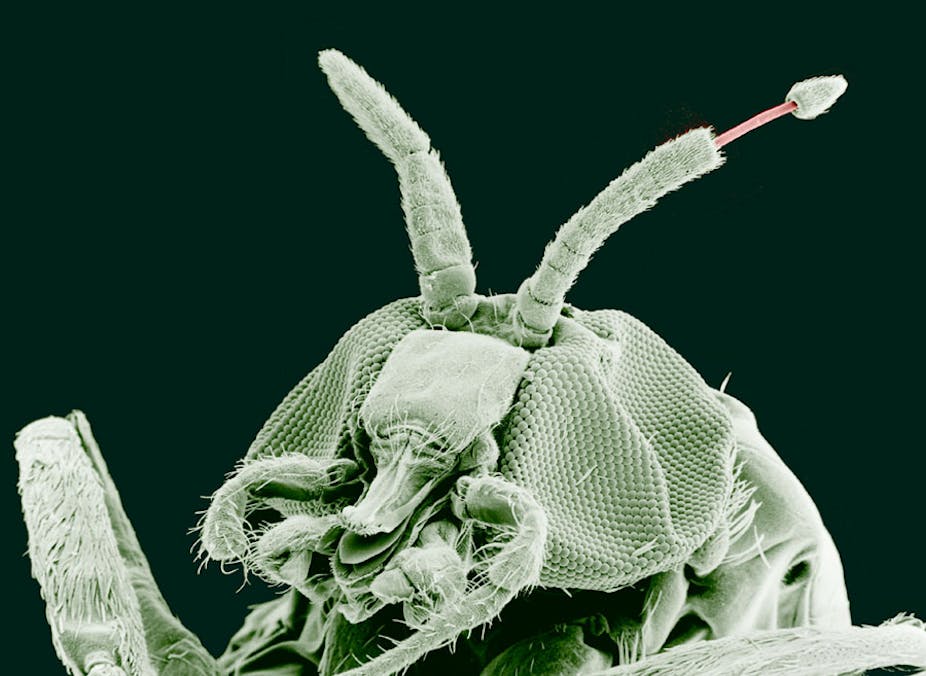In sub-Saharan Africa and parts of Latin America, there is a parasitic worm that infects about 25m people, causing serious skin diseases, epilepsy and blindness. Known as Onchocerca volvulus, it can live for more than a decade in nodules under the skin.
Each day the female worm produces thousands of larvae, called microfilariae, that make their way to the skin where they can be picked up by blood-feeding blackflies. The presence of these larvae under the skin can cause severe itching and disfiguring lesions. But, more disturbingly, some of those larvae can end up wandering into the eye. This complication occurs in nearly a third of those infected with the parasite and many end up blinded by the infection.
In 2013, Colombia became the first country in the Americas to eliminate onchocerciasis, the disease caused by this parasite. This year, the World Bank has pledged to eliminate onchocerciasis from Africa as well.
It’s not alone
But Onchocerca is not the only parasite that make its way into the host’s eyes. Many other parasites consider the eyes to be the go-to spot. One of the most iconic animal of Africa is the hippopotamus, but for all its brawny might, it does have a tiny mote in its eye in the form of a parasitic flatworm call Oculatrema hippopotami which lives under its eyelids.
Other parts of the eye are also prime real estate. The tear glands of some birds are home to a family of parasitic flukes call Philophthalmidae, which translate into “eye-lovers”. They feast on bird tears.
While none of those parasites go directly into the eye itself, there are many others that do. There are some species of fluke that infect fish and migrate to the eye where they induce cataract formation.
Harming the host
From a parasite’s perspective, it tends to be detrimental to cause your host harm, which will then ruin your chances to grow and flourish. Making your host blind could certainly be one such harm that should be avoided.
But, in the case of the flukes, the fish merely acts as a temporary transport host, and their final hosts are actually fish-eating birds. By partially blinding their host, these parasites improve their chances of ending up in the gut of a bird.
Surprisingly, for some animals being blinded by parasites is not such a big deal. The Greenland shark is infected by the parasite Ommatokoita elongata which plunges a pair of modified limbs straight into the shark’s eyeball and feeds by grazing on its cornea. As unpleasant as it sounds, the shark does not seem too affected by the parasite’s intrusive presence.
But of all places, why the eye? It has been suggested eyes provide a safer attachment site for this parasite because the host immune response there is less intense than elsewhere on the body. Despite speculations that the parasite may attract potential prey to the shark, there is no evidence that these parasitic eye-tassels serve such a function.
Why do it?
Coming back to Onchocerca – what are its evolutionary reason for blinding their hosts? Does it help them transmit, or does it allow them to seek shelter from the host’s immune system? It turns out that the presence of Onchocerca larvae in the eye is accidental.
When the microfilariae wander through the body in their effort to reach the skin, some of them end up barging into the eye. The resulting inflammatory reaction is caused by a symbiotic bacteria that the worm carries call Wolbachia. This results in lesions which, without treatment, can lead to blindness.
Onchoceriasis is considered a neglected tropical disease (NTD) – infectious diseases that occur primarily in low-income and middle-income countries. These parasite and pathogens exacerbate poverty because of their impact on childhood development, worker productivity, social relations, and general quality of life.
The African Program for Onchocerciasis Control (APOC) was launched in 1995 to control the spread of Onchocerca, but it has now changed its goal to completely eradicating the parasite. It is hoped that in the near future this eradication program will spare millions of people from the debilitating effects of this blinding parasite.

